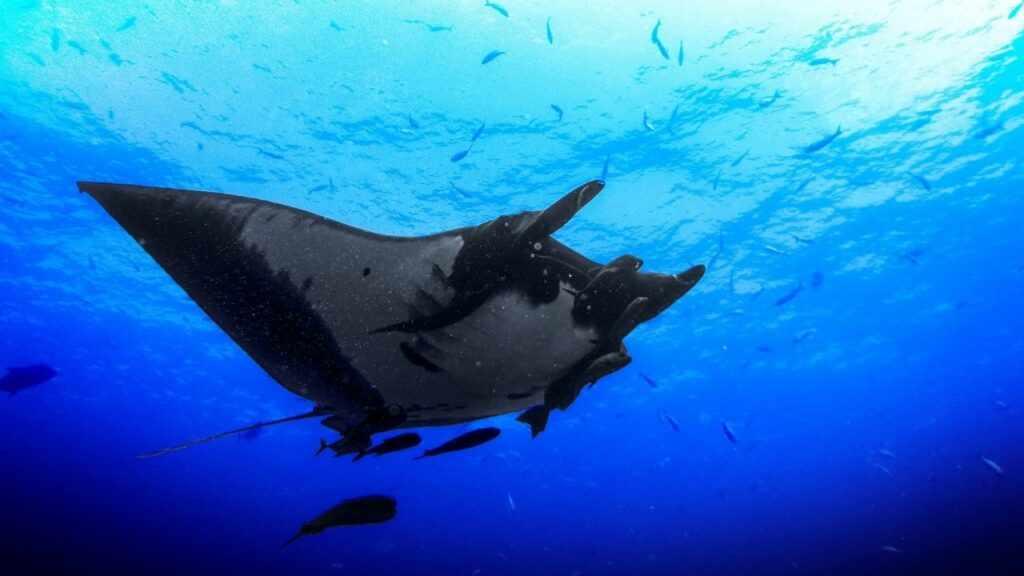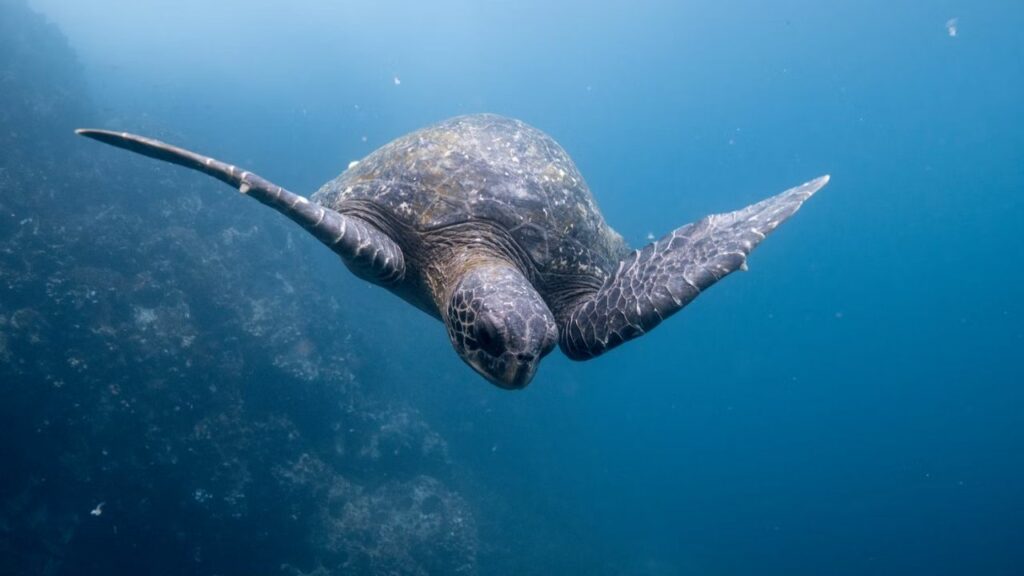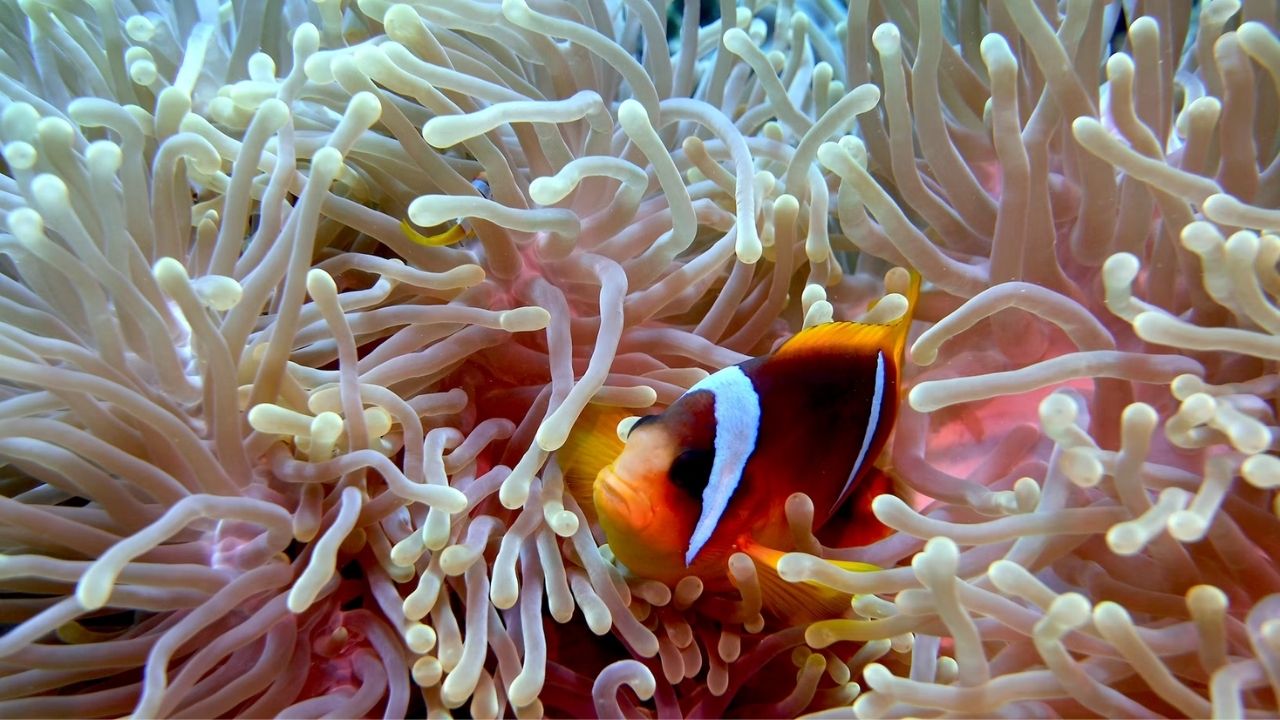Some would argue that the best way to enjoy recreational scuba diving is by leaving the camera at home and living in the moment. After all, diving isn’t cheap, so you better get your dollar’s worth underwater.
But on a practical (or superficial) level, say scuba diving cams are essential and don’t hinder the experience despite what some people believe.
Opening your eyes in saltwater strings, so it’s difficult to capture the underwater world without a high-quality camera. You’ll find that you get a blurry picture (unless you’re clearwater diving).
Plus, some cams can be attached to your scuba suit so it’s not in the way. That said, let me tell you precisely what you should look for when getting your scuba diving camera. It’s all about enhancing your scuba diving experience and memories.
How much do underwater cameras cost?
The cost of underwater cameras depends on a few factors. The quality and range of features and image resolution of a simplistic camera are widely different from a professional camera. Needless to say, cutting-edge features equal higher costs.
Beginner-friendly underwater cameras for scuba diving will cost about $200 to $400, whereas a professional scuba camera costs atleast $1000. You can get a no-compromises underwater camera for $500, although that might be overkill for recreational scuba diving.
What to look for when buying underwater cameras?
This six-step process is for beginners, hobbyists, and intermediate-level scuba divers. I’ll tell you about the most fundamental aspects of buying underwater cameras. This guide should be more than enough to make your choice. Though, if you’re looking for a costly, high-end professional camera, you should also reference other detailed guides.
1. Choose the camera type.
The first step is to choose between a compact camera or a DSRL camera. The choice is relatively simple – if you’re a beginner, just go with compact cameras. They’re cheaper and easy to use.
If you’re a hobbyist or someone similar, you can choose either depending on your need. DSLRs will obviously be modular, have more features, and produce superior images.
2. Isolate your specific use cases.
Isolating use cases is crucial to your budget. Taking family pictures for recreational purposes much closer to the water surface will not require an expensive camera. In comparison, snorkelers and scuba divers will need to spend more.
Another critical factor is geolocation. Colder and high-altitude environments will have more water pressure. In that case, you’ll need to consider the depth rating and durability over other factors.

3. Make a budget & stick to it.
Now that you have decided on your camera type and use cases, it’s time to finally make the budget. You should have a range instead of a single number like $250 to $350. Sometimes a comparably cheaper camera can have a better price to performance ratio.
Do note that you’ll be spending about 25% to 50% of your budget extra over time as you begin to upgrade your cameras with various accessories. It’s not a cost you should be worried about right away, but it’s better to spend a little extra and get a model that has compatibility for future upgrades.
4. Keep the size & weight into consideration.
Before you go knee-deep in the dozens of features, take the size and weight of the camera into consideration first. With a massive oxygen tank and other equipment on your back, you don’t need extra baggage.
Look for cameras that can fit in a small box or your pockets like GoPros. And if you’re going for a DSLR, be very sure because the size and weight have always been an issue with them for underwater uses.
5. Choose among the 5 most essential features.
- Battery Life: You most certainly won’t have any chargers underwater. Choose a camera with enough shots per charge for your use. I’d say 150 shots is a good number to start with.
- Macro: In an open environment like underwater, you need a camera with a wider lens and a good focus (for zooming in) for macro photography. Get a wide-angle lens of about 24mm or 28mm to be on the safer side.
- Temperature Threshold: Get a camera that can withstand colder temperatures without failure.
- Waterproof Depth: Obviously, you should get a camera with good depth ratings. 8ft to 10ft is the minimum for cameras these days. I’d suggest 33ft (10m) if you have extra bucks to spare.
- Image Stabilization: You’re essentially buying an action camera that needs to be used underwater where you won’t have a stable footing most of the time.
6. Other important features that help in the long run.
- The camera’s ports should be compatible with your devices for connectivity.
- The camera should have a manual white balance due to the absence of light.
- Get the biggest possible image sensor for better pixel quality.
- Get a model with the shortest shutter delay to avoid missing moments.
- The camera should support external lenses after the housing is attached.
Since you’re ready to buy your underwater camera now, head over to my quick review of the best underwater cameras for scuba diving and snorkeling in 2022.
Is a DSLR or mirrorless better for underwater photography?
Mirrorless cameras are the pinnacle of underwater photography and are better than DSLR cameras in several ways. The lack of a lens inside the camera body provides extra room for added tech components that have resulted in superior underwater images using mirrorless.
That said, mirrorless cameras have some drawbacks. Since mirrorless cameras are pretty niche, they typically won’t have the latest technologies as DSLRs.
Is GoPro suitable for scuba diving?
GoPro cameras are an excellent choice for scuba diving. They’re small, lightweight, and highly durable – all three of which are most important for scuba. GoPros can be used upto 33ft deep (good enough for recreational scuba) and upto approx. 200ft with protective housing.
Tips on Underwater Photography
- Use long exposure to take images because there’s less light underwater.
- The water surface is brighter when you’re underwater. So, position yourself lower than your subject (marine life, coral reef, etc.). The brighter backdrop will give you better exposure and a relatively better quality image.
- You can use flash but beware of startle marine life in your surroundings. Flash can also add white dots (sand and other particles) to your image. Counter this by getting close to your subject. Less distance reduces flash distortion.

Frequently Answered Questions (FAQs)
1. What do depth ratings mean for underwater cameras?
Depth ratings, given in ATM (short for Atmospheres), are the amount of atmospheric pressure your watch can withstand underwater. Going deeper than the limit might displace the rubber seals and metal locks and damage your underwater camera.
These ratings are measured in atmospheres or Earth’s atmospheric pressure above sea level. Water pressure drastically increases as you go deeper. A depth rating of 1ATM implies your camera can withstand water pressure upto 10 meters (32.8ft), 5ATM would mean 50 meters (164ft), and so on.
Time also plays an essential factor. In most cases, 1ATM means 10m for up to 10 minutes. Similarly, 5ATM equals 50m up to 10 minutes. Nonetheless, you should check your camera’s manual to get an accurate idea of withstandable time.
2. How deep can cameras go underwater?
Standard underwater cameras can effortlessly go 8 to 10ft deep for scuba diving. Although, underwater cams made by reputable companies specifically for diving can go about 30ft or more before requiring a special underwater case to withstand the water pressure.
3. Can I use my digital camera underwater?
Quality digital cameras can be used underwater, about 30ft deep. However, cheaper digital cams won’t click a single photo underwater. Nonetheless, you can use professional underwater housing to take your digital cameras as deep as 200ft.
It’s noteworthy that the image quality would greatly suffer because these plastic “waterproof housings” aren’t perfectly transparent. It’ll be like you’re taking pictures with your camera under a plastic bag just several times thicker.
4. Are underwater cameras just as good as digital cameras?
Underwater cameras aren’t as good as digital cameras above sea level. Your digicam will take a much better photo above water than an underwater camera. Digital cams are useless underwater.
It’s noteworthy to mention that the reflection and refraction of light is reduced underwater. A loss of image data may impact resolution quality, color contrast, and saturation.
5. How do I keep my underwater camera well-maintained?
The process of keeping your underwater camera is similar – clean it thoroughly. Every substance (ice, ocean water, etc.) has corrosive items that affect metal locks. Be sure to rinse your camera thoroughly with clean water and dry it before storage.
Regular maintenance helps you retain the waterproofing qualities of your underwater camera.

